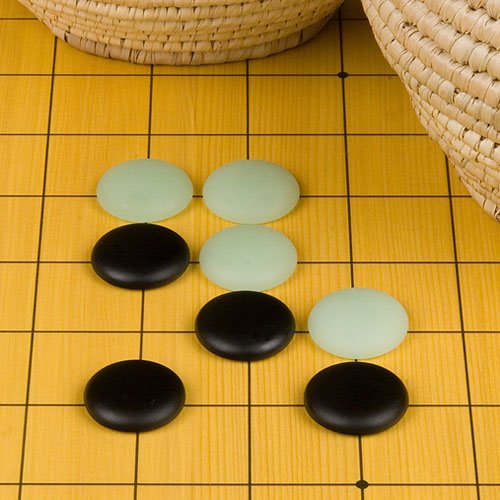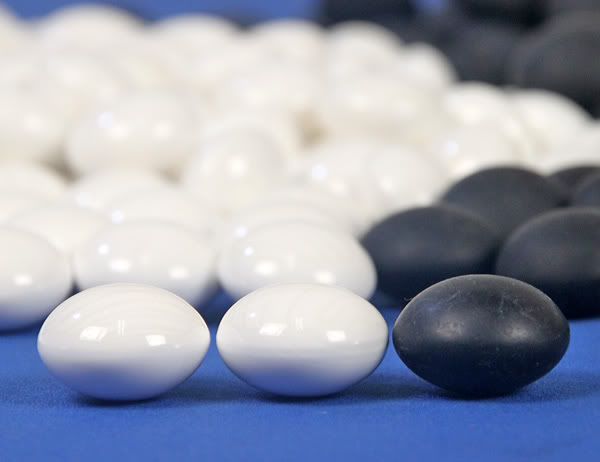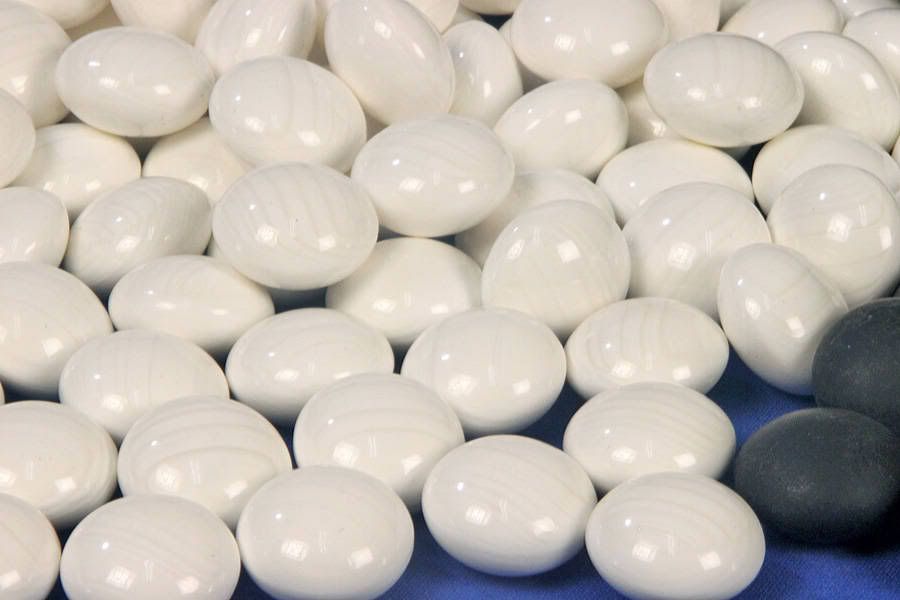
Fewer people know that another, Chinese, variety of go stones exists — the single-convex stones (compare the one on the right with the rest):

(source)
A bit of information from one of the places one can buy these stones nowadays, Yellow Mountain Imports:
These stones are "single convex." One side is flat with a slight rounding on the edge, the other is fully rounded. Whether to play with single convex or double convex is a matter of personal taste. In general, Chinese Go players prefer these single convex stones for their feel and louder solid "snap" when played on the board.One can hear this "snap" when viewing this game commentary made by a Chinese professional go player.
In addition to the aesthetic quality, the single-convex shape has three more uses: a) when analyzing game variations, one can put the discussed stones with their flat side up — this way it is easy to see the "side-variation" of the board position vs. the "main version" of the game; b) single-convex stones are less easily dislodged from their position if the board is bumped (or if one accidentally drops a stone from the above or touches stones with his sleeve); c) according to Chinese rules, one must count the stones placed on the board as a part of one's score — turning stones over marks them as already counted.
On the other hand, they are a considered to be a little more difficult to pick up from the board at the end of the game or when removing captured stones — but I have not found it difficult at all; you just need to apply a little leverage with your thumb (although it's true that you can't pick up two or three at a time as with the bi-convex stones). If you watch the video linked above, you'll see that the player picks up the stones quite easily.
Also, here, a boy picks up a large group of captured single-convex stones (at the same time demonstrating the "snap-back" tesuji):
The most famous material for making these stones is yunzi (although nowadays, bi-convex yunzi stones are also available):
(note the greenish glow around the black stone)
When buying single-convex stones, one must make sure he has the appropriate board for them. Only size 3 stones will fit the standard Japanese boards (where the spacing is slightly smaller than on the Chinese boards). Sizes 4 and 5 are for Chinese go boards only. Of course, one can get Chinese go board (or a full set), but some people prefer Japanese shin-kaya or kaya wooden boards to Chinese bamboo ones because of the Japanese boards' beautiful acoustic qualities.
Some more pictures of single-convex stones (source):
![[cdlg070728c.jpg]](https://blogger.googleusercontent.com/img/b/R29vZ2xl/AVvXsEgngq0-FnwShYt7nWY682_VKG1w4GkIxTVxbqb0igFpCnl4a-xpd6v0zehtfLu0v5a0UkO8O1gId_G8CgAnRpwLQ8ozf5sWQJ6o87h2UTW27m0qaMF-jyXyoY2ryizpcT07QpbtLEhHw7Zh/s640/cdlg070728c.jpg)

Stones from Russia:

(As you can see, Russian single-convex stones are more convex than the modern Chinese оr Japanese ones. I am not sure how easy they are to handle.)

Then again, if you're a fan of bi-convex stones, you can go nuts and get these:


No comments:
Post a Comment